If you’re like most vinyl enthusiasts, your record collection is more than just passing phase. It’s a treasured keepsake that you may pass down to your children or a nephew one day. Taking care of vinyl is easier than you think. Below are a few tips that will help keep your records scratch-free, clean, and vibrant for years to come.
Contents
Storing Your Vinyl
Storage and placement of vinyl records are where most collectors make costly mistakes that could result in warped records or scratched vinyl. Consider the following storage methods:
- Use an inner vinyl sleeve. Most records come with inner sleeves that separate the vinyl from the outer hardcover.
- Pull the entire sleeve out of the cover when using the record, and put the record back into the sleeve before putting it back into the cover.
- Industrial-grade sleeves can be purchased to protect the record from scratches and to prevent the artwork from being damaged.
- A record should be pulled from the cover and pushed back into the cover horizontally, not vertically. Refrain from dropping a record into the sleeve or cover.
- Records should be stored vertically. Laying records on top of each other will warp them over time.
- Records should be stored in a dry cool room away from vents, windows, or doors that lead to the outside. Humidity and sunlight can warp records and cause the cover art to fade.
Playing Your Records
Like CD’s, cassettes, and 8-tracks (well, maybe not 8-tracks), records were designed to be played and enjoyed, not just stored. When playing your records, do the following:
- Minimize the amount of time that the record is outside of the sleeve. When you finish playing a record, immediately return it to the sleeve.
- Be gentle when you drop the stylus. Nice and easy on the edge of the record. Avoid dropping the stylus in the middle of the album if possible. Try to play the record from beginning to end.
- When lifting the stylus, place your finger under the arm and quickly but gently lift straight up. Never apply downward pressure on the stylus.
How to Clean Vinyl Records?
- When removing dust and environmental debris from your vinyl, the best tool for cleaning your vinyl is a carbon fiber brush. The brush can get in between the grooves will not scratch the vinyl surface.
- Keep your fingers off the vinyl as much as possible. The best method is to place the record on the player and let it spin while gently holding the brush over the surface.
- Only use industry-approved cleaners on your records. Harsh chemicals will dull the surface and affect the audio quality of the vinyl.
- You may want to invest in a vinyl vacuum cleaner. Vacuums can lift all dirt and dust from the record while applying a gentle cleanser to the surface
What Should I Use to Clean my Records?
It’s important to consider the proper tools and material you will need in a vinyl record & stylus cleaning kit. An old rag with some form of cleaning solvent simply won’t make the cut.
Anti-Static Carbon Fiber
Anti-static carbon fiber bristles remove the unwanted buildup of static electricity from vinyl. Static draws dust to the LP and stylus which, over time, collects and interrupts their connection, interfering with the quality of music produced. Dust… the enemy of vinyl, and what is a large contributor to the potential crackle and pop sound vinyl is known for.
Velvet LP Brush
In conjunction with the carbon fiber brush, a soft velvet brush helps gently remove dust and or any other contaminant which might find its way to an LP record. Pet hair, moisture from humidity, or even skin follicles shed during album handling can be safely removed with a velvet LP brush before using the carbon fiber to reduce static electricity which makes such items “stick” to the surface of a vinyl LP.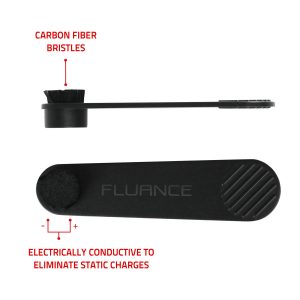
How to Use a Stylus Brush
Using a stylus brush is recommended by cartridge manufacturers such as Ortofon, as it is one of the most traditional methods. Tiny debris and dust can accumulate on the stylus, arguably causing more of a problem than when it collects on the actual record to be played. The stylus is a delicate premium component, which will last a very long time if properly cared for but can be easily broken if not treated properly.
- The brush is carefully rubbed against the stylus by moving it from the back to the front, representing the same motion the record makes when the tonearm is down, and the LP is spinning.
- If used regularly, it should be cleaned weekly or even more frequently if you notice debris and dust on the record.
How to clean a stylus isn’t a difficult process, but there is a right way and a wrong way of going about it. The stylus should never be wiped clean with fingers, but only touched by the actual record and an appropriate, good quality stylus brush designed and used specifically for the one purpose of cleaning the stylus.
The Benefits of Proper Cleaning
The benefits of properly cleaning vinyl and the turntable’s stylus with a great kit such as the Fluance Vinyl Record and Stylus Cleaning Kit are noticeable by the quality of sound produced by the system. Another aspect of proper cleaning is you’ll preserve the record and won’t develop skips when properly cared for. In conjunction with proper storage and cleaning of components in your sound system, you’ll have great music which is a true pleasure to play and enjoy.
Keeping your collection in pristine condition will allow you to enjoy your records for years to come. Be sure to also use a turntable that will play your records beautifully while minimizing unnecessary wear on your records. Check out the RT85 turntable to enjoy all your vinyl records.
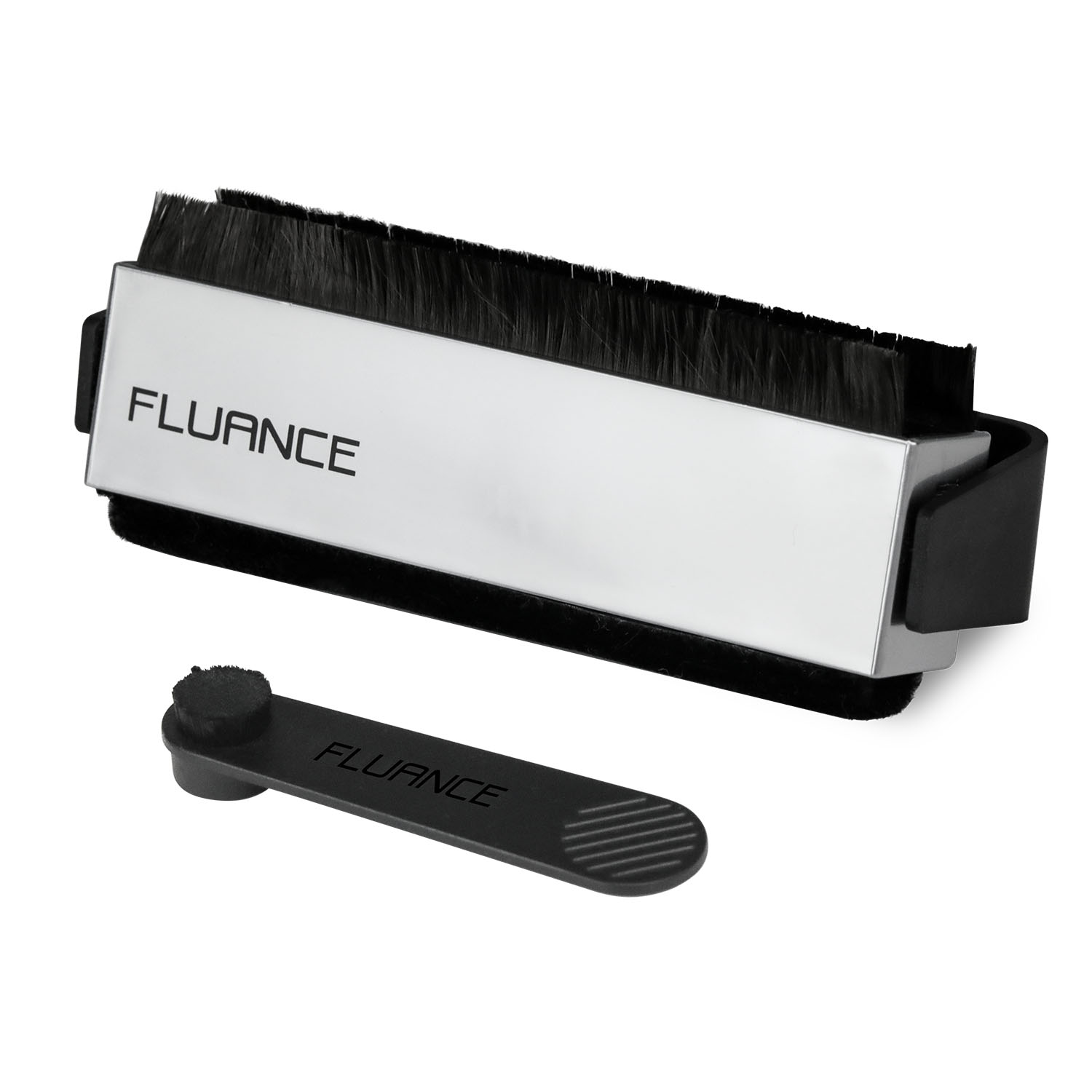
Fluance Vinyl Record & Stylus Cleaning Kit
Everything you need to maximize the playback of your vinyl records, including a 2-in-1 Anti-static Carbon Fiber & Soft Velvet LP Brush and Stylus Brush.
Learn More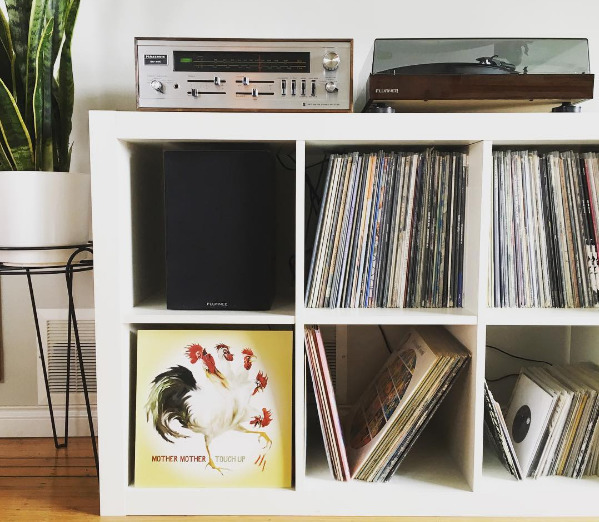
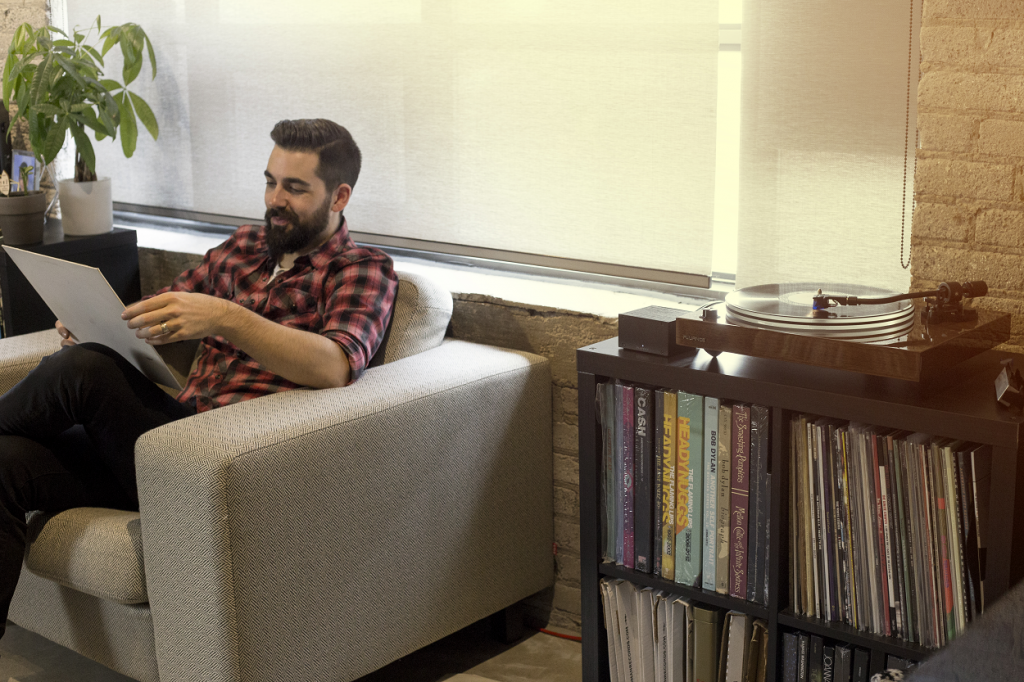
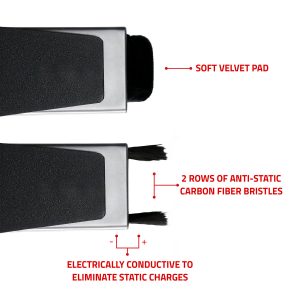
Leave a Reply
You must be logged in to post a comment.